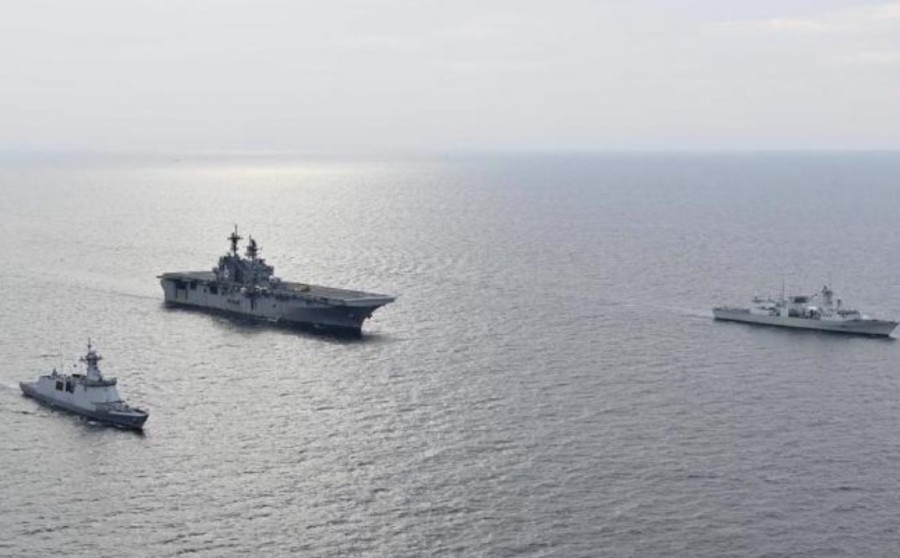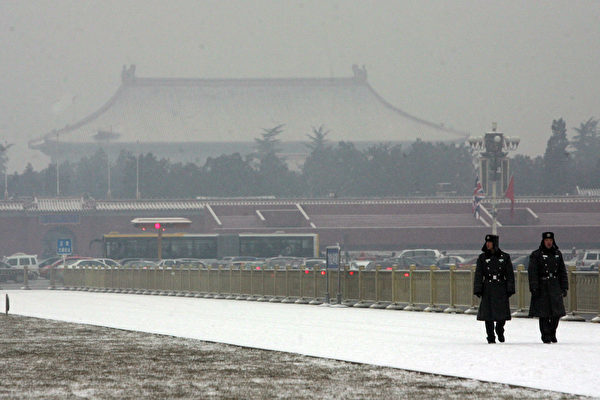On September 15, the navies of the United States, Canada, and South Korea jointly held a ceremony commemorating the 73rd anniversary of the Incheon Landing Operation victory and conducted a joint exercise in waters west of Incheon near the Yellow Sea. (South Korean Ministry of National Defense)
People News - While U.S. President Trump is occupied with mediating the Russia-Ukraine conflict, Chinese Communist Party warships have made an unprecedented incursion into the South Pacific waters between Australia and New Zealand to conduct live-fire exercises. The Chinese Navy is keen to demonstrate its military projection capabilities to intimidate other nations, which has sparked significant attention and concern.
On February 13, the Australian Department of Defense released a statement indicating awareness of three Chinese vessels operating in northeastern Australia. In the upcoming week, these Chinese warships are set to navigate through the exclusive economic zone along Australia's east coast and into the Tasman Sea.
This exercise by the Chinese Navy has garnered attention primarily because it marks the first time they have conducted military drills in the Australia-New Zealand waters.
The Associated Press cited former Australian Navy officer Jennifer Parker, who noted that this is part of a broader strategy for military projection by the Chinese Navy.
Michael Shoebridge, director of the Australian Strategic Policy Institute, informed the Associated Press that these recent developments may compel the Australian government to reassess its policy towards China. "Anyone who believes that establishing military ties with the Chinese Communist Party poses no risks should now recognize that this is a misconception. No resident of the South Pacific should wish for the Chinese military to bring tension and aggression to Southeast Asia and North Asia, affecting our local neighbors."
Shen Mingshi, a researcher at Taiwan's National Defense Security Research Institute, told The Epoch Times that previously, the Chinese Communist Party (CCP) Navy's furthest reach beyond the Second Island Chain was to Hawaii, primarily for routine maritime rescue drills. However, this situation is markedly different; three warships have been deployed over long distances to the waters near Australia and New Zealand, where they are conducting live-fire artillery exercises. The CCP's main objective is to retaliate against the recent joint exercises conducted by the US, Japan, Australia, and the Philippines in the South China Sea earlier this month. If the CCP does not face strict warnings or condemnation, the next occurrence could involve an entire aircraft carrier strike group, making demonstrations or provocations at other nations' doorsteps a new norm.
Shen Mingshi noted that New Zealand has historically tended to hide behind Australia and has not been particularly concerned about issues related to the CCP or the Western Pacific. 'However, following this incident, I believe New Zealand will seek to enhance its naval capabilities. Australia and New Zealand have become aware that the CCP is now threatening them at their doorstep, and in the future, there is a possibility of blockades that could impact both exports and imports. The live-fire exercises conducted by the CCP Navy here carry significant implications of threat and challenge. This behavior is essentially expansionist or aggressive, primarily aimed at intimidating and deterring Australia from intervening in matters concerning the Taiwan Strait or the South China Sea.
Su Ziyun, the director of the Strategic and Resources Institute at Taiwan's National Defense Security Research Institute, remarked that the patrols conducted by the United States and its allies in the South China Sea are intended to ensure the safety of maritime routes. In contrast, the Chinese Communist Party (CCP) is pursuing an expansionist agenda, aiming to control these vital sea lanes. The Taiwan Strait and its adjacent waters are critical, accounting for 26% of global shipping volume. Should the CCP gain control over the waters surrounding Taiwan, it would disrupt key global economic and trade routes. 'Last year, vessels from 10 different countries traversed the Taiwan Strait, and this year, naval exercises by the UK, France, Japan, and the United States in the vicinity of Taiwan are designed to maintain the flow of the world's most crucial shipping route.'
Su Ziyun further noted that the CCP's deployment of warships to Australia and New Zealand for firepower displays serves as a warning to Australia against involvement in South China Sea matters. However, such actions will only reinforce Australia's collaboration with the US military, ultimately proving counterproductive.











News magazine bootstrap themes!
I like this themes, fast loading and look profesional
Thank you Carlos!
You're welcome!
Please support me with give positive rating!
Yes Sure!